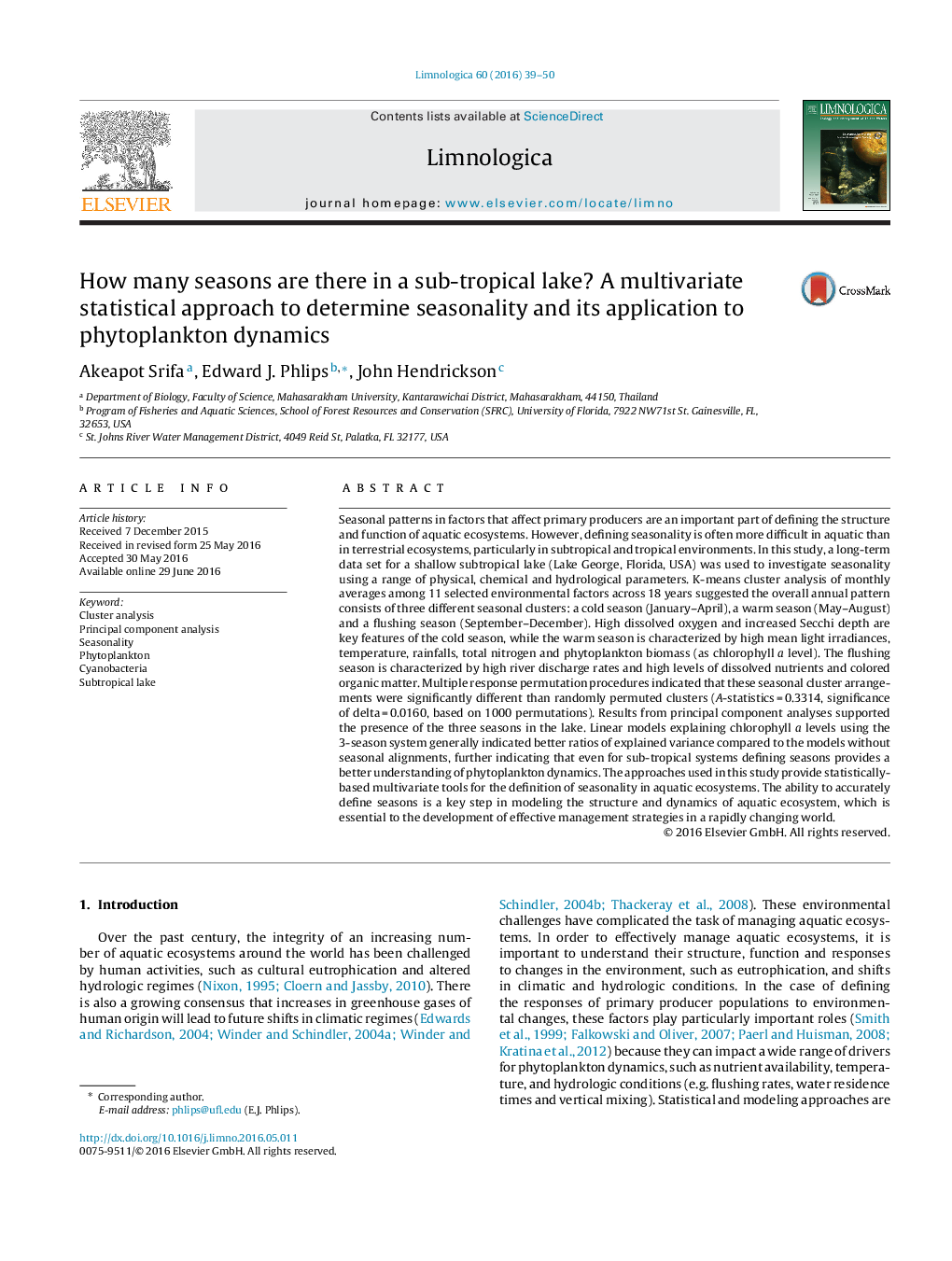| کد مقاله | کد نشریه | سال انتشار | مقاله انگلیسی | نسخه تمام متن |
|---|---|---|---|---|
| 4400318 | 1618562 | 2016 | 12 صفحه PDF | دانلود رایگان |
Seasonal patterns in factors that affect primary producers are an important part of defining the structure and function of aquatic ecosystems. However, defining seasonality is often more difficult in aquatic than in terrestrial ecosystems, particularly in subtropical and tropical environments. In this study, a long-term data set for a shallow subtropical lake (Lake George, Florida, USA) was used to investigate seasonality using a range of physical, chemical and hydrological parameters. K-means cluster analysis of monthly averages among 11 selected environmental factors across 18 years suggested the overall annual pattern consists of three different seasonal clusters: a cold season (January–April), a warm season (May–August) and a flushing season (September–December). High dissolved oxygen and increased Secchi depth are key features of the cold season, while the warm season is characterized by high mean light irradiances, temperature, rainfalls, total nitrogen and phytoplankton biomass (as chlorophyll a level). The flushing season is characterized by high river discharge rates and high levels of dissolved nutrients and colored organic matter. Multiple response permutation procedures indicated that these seasonal cluster arrangements were significantly different than randomly permuted clusters (A-statistics = 0.3314, significance of delta = 0.0160, based on 1000 permutations). Results from principal component analyses supported the presence of the three seasons in the lake. Linear models explaining chlorophyll a levels using the 3-season system generally indicated better ratios of explained variance compared to the models without seasonal alignments, further indicating that even for sub-tropical systems defining seasons provides a better understanding of phytoplankton dynamics. The approaches used in this study provide statistically-based multivariate tools for the definition of seasonality in aquatic ecosystems. The ability to accurately define seasons is a key step in modeling the structure and dynamics of aquatic ecosystem, which is essential to the development of effective management strategies in a rapidly changing world.
Journal: Limnologica - Ecology and Management of Inland Waters - Volume 60, September 2016, Pages 39–50
